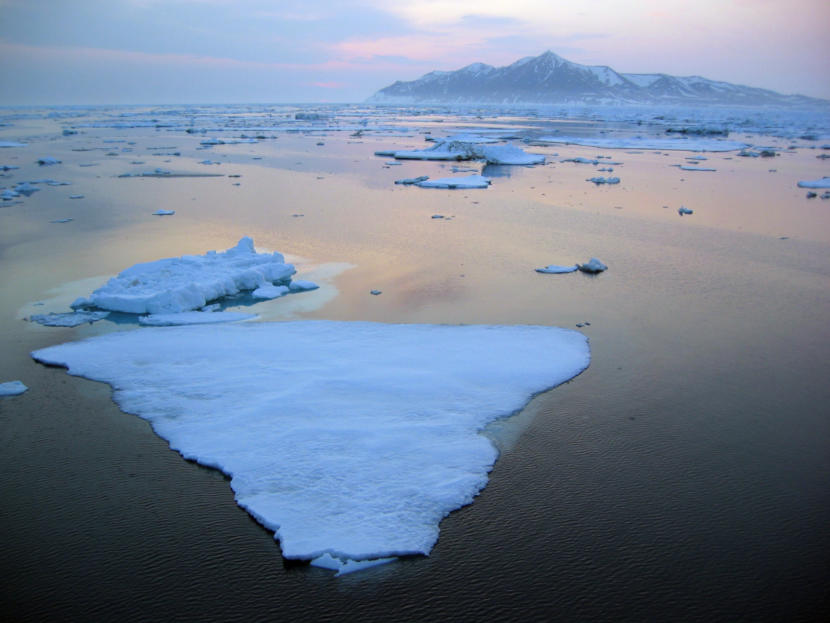
Arctic Ocean temperatures are rising at rates faster than previously thought by the scientific community.
That’s the finding of a new study from the University of Alaska Fairbanks, which shows warming waters having an effect on everything from sea ice growth to marine ecosystems.
One researcher says now is a key time for studies on Arctic Ocean conditions, before the hotter temperatures become the new normal.
For UAF oceanography professor Seth Danielson, the record low sea ice and record high ocean temperatures of the last couple years came as a shock.
“It was a bit surprising, because we felt like it came a couple decades too early,” Danielson said.
Danielson is part of a team of researchers that authored a paper discussing the changes to Pacific Arctic ecosystems from warmer ocean temperatures. It lists several observations of the area, including weaker winter sea ice and an early melting period.
More open water conditions mean that there is likely to be an increase in vessel traffic through the region, which Danielson said could have an impact on subsistence. Low sea ice could also change migratory patterns.
“The time of the year that some hunting activities can take place may need to change,” Danielson said. “I think we’ve seen some indications of that already. And the species that people are hunting and fishing for may change as well.”

Danielson said one of the findings of the paper is that new groundfish species, like Pacific cod, are showing up further north and have the potential to disrupt the native Arctic cod populations — and send ripples up the food chain.
“They’re a focal point through which energy flows to a lot of different components,” Danielson said. “For instance, they’re eaten by the seals. They’re eaten directly by people. The seals are eaten by people and polar bears.”
Danielson said that researchers expected that: As temperatures in the region got warmer, these effects could happen. He said research models show that the heat waves caused by global warming have become more prevalent in the wake of industrial advancement.
“You can be fairly confident in attributing these types of unusual events to human-induced causes,” Danielson said.
Danielson said that the rapid changes to Arctic marine ecosystems are happening in real time, as researchers are studying them. He said these changes likely aren’t going anywhere.
“It’s not gonna be too long before these extremely low-ice years that we’ve just had in the last couple years will be what we consider to be the norm,” Danielson said.
Historically, Danielson said there wasn’t a lot of scientific observation of Arctic waters four-to-five decades ago. He said the rapid warm changes to the environment mean now, more than ever, is the right time to keep tabs on Arctic waters.
“We’re at this interesting spot now, where we know things are changing incredibly rapidly, and now is the best chance for us to go out and make some additional observations,” Danielson said.
Danielson’s research was part of a coalition of scientists with the Arctic Integrated Ecosystem Research Program. The paper was published this month in the Nature Climate Change scientific journal.
